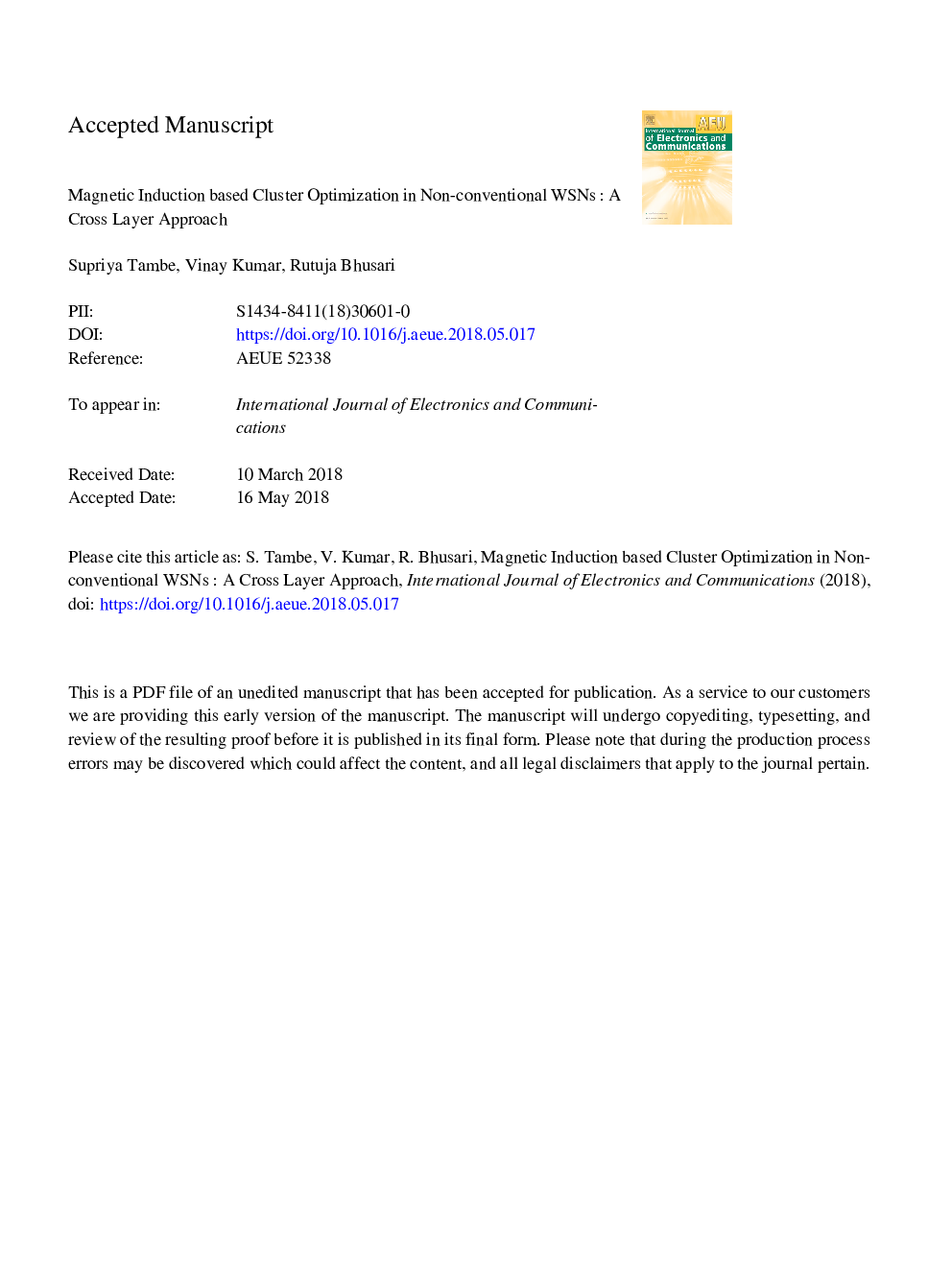| کد مقاله | کد نشریه | سال انتشار | مقاله انگلیسی | نسخه تمام متن |
|---|---|---|---|---|
| 6878962 | 1443107 | 2018 | 12 صفحه PDF | دانلود رایگان |
عنوان انگلیسی مقاله ISI
Magnetic induction based cluster optimization in non-conventional WSNs: A cross layer approach
دانلود مقاله + سفارش ترجمه
دانلود مقاله ISI انگلیسی
رایگان برای ایرانیان
کلمات کلیدی
موضوعات مرتبط
مهندسی و علوم پایه
مهندسی کامپیوتر
شبکه های کامپیوتری و ارتباطات
پیش نمایش صفحه اول مقاله

چکیده انگلیسی
Conventional Radio Frequency (RF) communication technique is unsuitable for communication in non-conventional media (water, soil, rocks, etc.) because of heavy losses incurred due to dynamic channel characteristics. Magnetic Induction (MI) communication overcomes these losses as it is least affected by such varying channel characteristics. In non-conventional media based Wireless Sensor Networks (WSNs) the deployed sensor nodes cannot replace or replenish their batteries. Thus, energy consumption should be minimized and that can be achieved by clustering process. This process involves data sensing, aggregation and routing to the base station. These sub-tasks are performed under Physical (PHY), Medium Access Control (MAC) and Network (NET) layers of OSI Network model. Having lesser or larger number of clusters has different impact on energy consumption in different layers' perspective. A large number of clusters decreases energy consumption as per PHY layer whereas it results in increased energy consumption as per MAC and NET layers. Thus, a trade-off is required to minimize the overall energy consumption. To this end, we found an optimal number of clusters considering the simultaneous influence of all three layers. The above analysis is performed for three media viz. sea water, fresh water and dry soil.
ناشر
Database: Elsevier - ScienceDirect (ساینس دایرکت)
Journal: AEU - International Journal of Electronics and Communications - Volume 93, September 2018, Pages 53-62
Journal: AEU - International Journal of Electronics and Communications - Volume 93, September 2018, Pages 53-62
نویسندگان
Supriya Tambe, Vinay Kumar, Rutuja Bhusari,